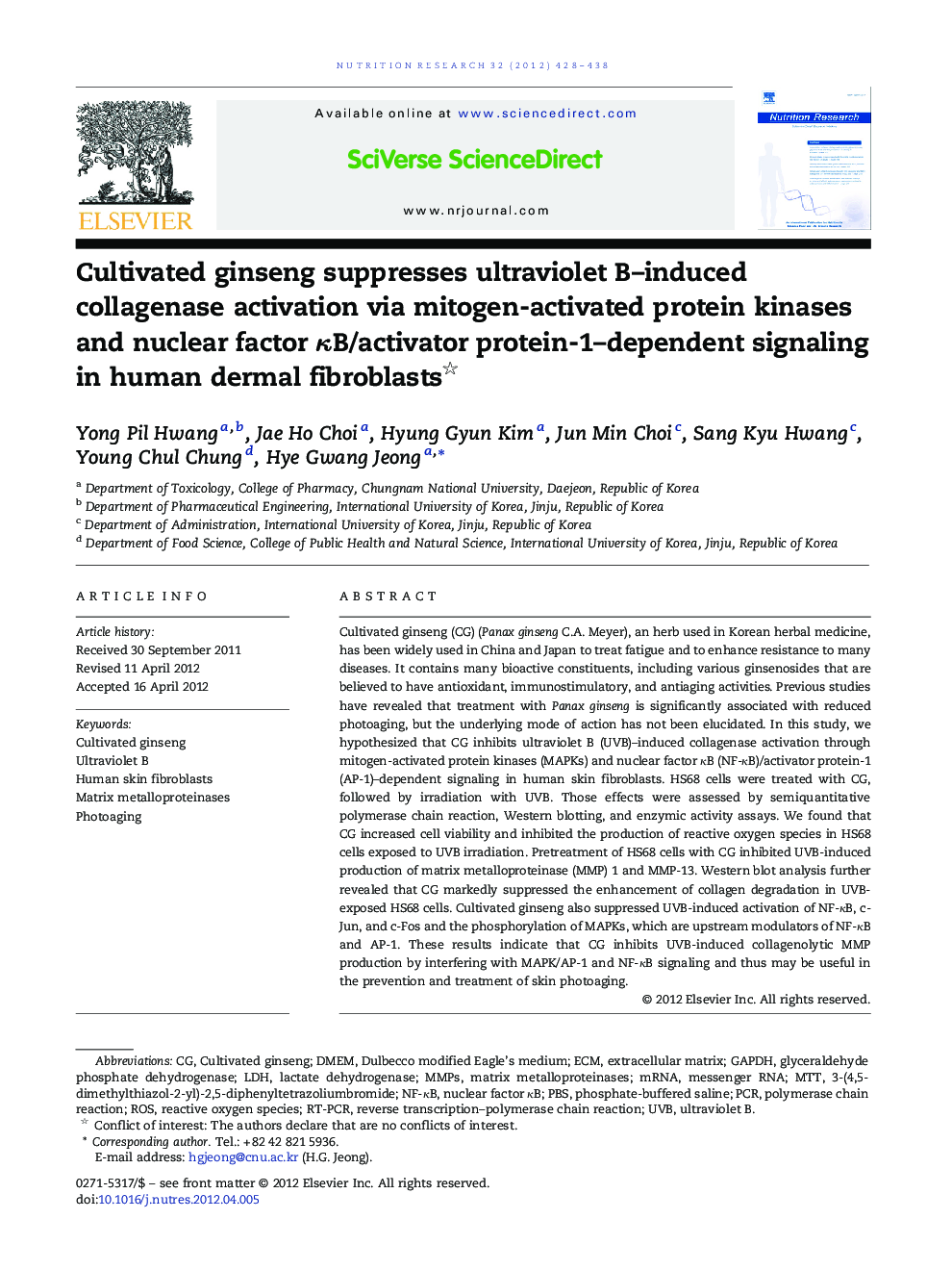| Article ID | Journal | Published Year | Pages | File Type |
|---|---|---|---|---|
| 2809057 | Nutrition Research | 2012 | 11 Pages |
Cultivated ginseng (CG) (Panax ginseng C.A. Meyer), an herb used in Korean herbal medicine, has been widely used in China and Japan to treat fatigue and to enhance resistance to many diseases. It contains many bioactive constituents, including various ginsenosides that are believed to have antioxidant, immunostimulatory, and antiaging activities. Previous studies have revealed that treatment with Panax ginseng is significantly associated with reduced photoaging, but the underlying mode of action has not been elucidated. In this study, we hypothesized that CG inhibits ultraviolet B (UVB)–induced collagenase activation through mitogen-activated protein kinases (MAPKs) and nuclear factor κB (NF-κB)/activator protein-1 (AP-1)–dependent signaling in human skin fibroblasts. HS68 cells were treated with CG, followed by irradiation with UVB. Those effects were assessed by semiquantitative polymerase chain reaction, Western blotting, and enzymic activity assays. We found that CG increased cell viability and inhibited the production of reactive oxygen species in HS68 cells exposed to UVB irradiation. Pretreatment of HS68 cells with CG inhibited UVB-induced production of matrix metalloproteinase (MMP) 1 and MMP-13. Western blot analysis further revealed that CG markedly suppressed the enhancement of collagen degradation in UVB-exposed HS68 cells. Cultivated ginseng also suppressed UVB-induced activation of NF-κB, c-Jun, and c-Fos and the phosphorylation of MAPKs, which are upstream modulators of NF-κB and AP-1. These results indicate that CG inhibits UVB-induced collagenolytic MMP production by interfering with MAPK/AP-1 and NF-κB signaling and thus may be useful in the prevention and treatment of skin photoaging.
